Clinical and laboratory evaluation of peripheral prism glasses for hemianopia
- PMID: 19357552
- PMCID: PMC2680467
- DOI: 10.1097/OPX.0b013e31819f9e4d
Clinical and laboratory evaluation of peripheral prism glasses for hemianopia
Abstract
Purpose: Homonymous hemianopia (the loss of vision on the same side in each eye) impairs the ability to navigate and walk safely. We evaluated peripheral prism glasses as a low vision optical device for hemianopia in an extended wearing trial.
Methods: Twenty-three patients with complete hemianopia (13 right) with neither visual neglect nor cognitive deficit enrolled in the 5-visit study. To expand the horizontal visual field, patients' spectacles were fitted with both upper and lower Press-On Fresnel prism segments (each 40 prism diopters) across the upper and lower portions of the lens on the hemianopic ("blind") side. Patients were asked to wear these spectacles as much as possible for the duration of the study, which averaged 9 (range: 5 to 13) weeks. Clinical success (continued wear, indicating perceived overall benefit), visual field expansion, perceived direction, and perceived quality of life were measured.
Results: Clinical success: 14 of 21 (67%) patients chose to continue to wear the peripheral prism glasses at the end of the study (two patients did not complete the study for non-vision reasons). At long-term follow-up (8 to 51 months), 5 of 12 (42%) patients reported still wearing the device. Visual field expansion: expansion of about 22 degrees in both the upper and lower quadrants was demonstrated for all patients (binocular perimetry, Goldmann V4e). Perceived direction: two patients demonstrated a transient adaptation to the change in visual direction produced by the peripheral prism glasses. Quality of life: at study end, reduced difficulty noticing obstacles on the hemianopic side was reported.
Conclusions: The peripheral prism glasses provided reported benefits (usually in obstacle avoidance) to 2/3 of the patients completing the study, a very good success rate for a vision rehabilitation device. Possible reasons for long-term discontinuation and limited adaptation of perceived direction are discussed.
Figures


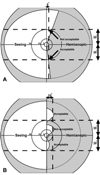
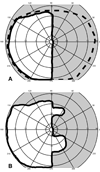


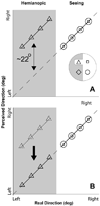

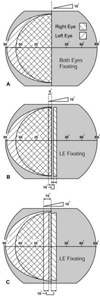

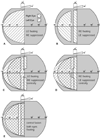
References
-
- Zhang X, Kedar S, Lynn MJ, Newman NJ, Biousse V. Homonymous hemianopia: Clinical-anatomic correlations in 904 cases. Neurology. 2006;66:906–910. - PubMed
-
- Williams GR, Jiang JG, Matchar DB, Samsa GP. Incidence and occurrence of total (first-ever and recurrent) stroke. Stroke. 1999;30:2523–2528. - PubMed
-
- Rossi PW, Kheyfets S, Reding J. Fresnel prisms improve perception in stroke patients with homonymous hemianopia or unilateral visual neglect. Neurology. 1990;40:1597–1599. - PubMed
-
- Zhang X, Kedar S, Lynn MJ, Newman NJ, Biousse V. Natural history of homonymous hemianopia. Neurology. 2006;66:901–905. - PubMed
-
- Kerkhoff G, Munssinger U, Haaf E, Eberlestrauss G, Stogerer E. Rehabilitation of homonymous scotomas in patients with postgeniculate damage of the visual-system-saccadic compensation training. Restor Neurol Neurosci. 1992;4:245–254. - PubMed
Publication types
MeSH terms
Grants and funding
LinkOut - more resources
Full Text Sources
Other Literature Sources
Medical

